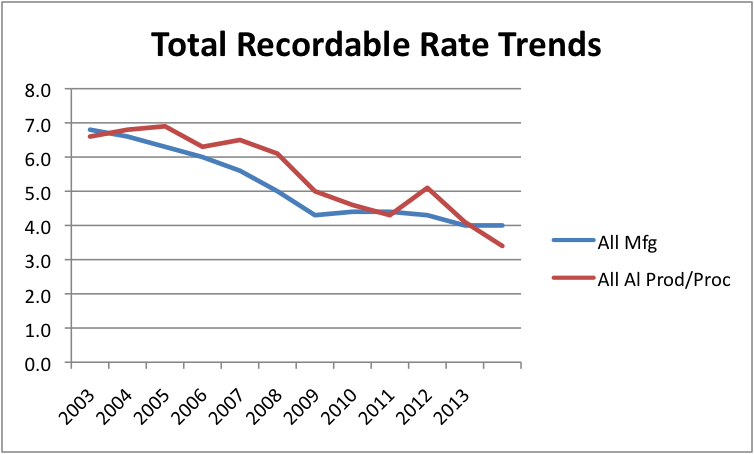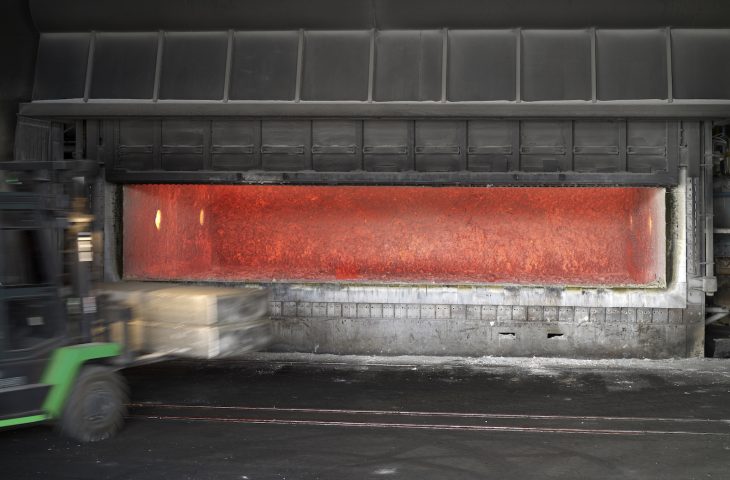By Garney B. Scott, CEO of Scepter, Inc. and chairman of the Aluminum Association.
Ensuring the health, safety, and well-being of our workers has long been a top priority for the aluminum industry. As chairman of the Aluminum Association and CEO of aluminum recycling company Scepter, I work hard everyday to prioritize safety — both as a the head of my company and in my role as an industry leader.
Aluminum producers have made considerable progress in improving employee safety in recent years. We have seen a steady decrease in injuries and illnesses reported by our workers to the Occupational Safety and Health Administration (OSHA) over the past decade. In fact, 2014 — the most recent year with available data — was the safest year for the domestic industry since tracking began in 1994 according to data from the U.S. Bureau of Labor Statistics. Recordable incidents in the aluminum sector have declined nearly 50% over the past ten years and today are below averages in manufacturing as a whole.

Though a single incident is one too many, the tremendous safety improvements made by aluminum producers and recyclers provide a foundation upon which to drive further improvements toward the ultimate goal of zero.
Sustainability is a leading differentiator for aluminum, and safety is a key component of that sustainability. In my view we cannot be sustainable without first being safe. We can continue to improve safety performance and measurement, if we continue to make the well-being of our employees a top priority and drive for continued advances in our safety performance. But to do that, we need a strong foundation.
A molten metal explosion is the single greatest safety issue in the aluminum industry as it can cause catastrophic injuries and fatalities in addition to significant property damage. Clearly, explosions are a rare occurrence when you consider the billions of pounds of molten metal handled safely each year. However, on the rare occasion an explosion does occur, the results can be devastating.
Although the overall trend in incidents, particularly more major incidents, is moving downward, there is still much work to be done and the Association is proud to be at the forefront of that work. Earlier this year, the Association released the Fourth Edition of its Guidelines for Handling Molten Aluminum, which is based upon industry best practices and plant experience. The first edition was published in 1980. With previous updates in 1990 and 2002, this latest revision represents the hundreds of years of collective expertise in managing molten metal accumulated by many leading industry experts.
The Guidelines outlines the steps, best practices and recommended equipment used to reduce the potential hazards in the management of molten aluminum. Additionally, the Guidelines provide insight into industry research on the causes and prevention of molten aluminum incidents. This information is key in working towards our collective goal of zero safety incidents.
The Association sponsors considerable research into the cause and prevention of molten metal explosions, building upon the base of information established by extensive work at the Alcoa Technical Center. The industry has been very open about its efforts, and we have shared our research findings with government agencies and other industry groups with similar concerns.
I urge you to share the valuable information in the revised guidelines with those in your plants that work with molten metal so we, together as an industry, can continue toward our goal of zero incidents. I think we can all agree that each and every aluminum industry worker should go home safely each day, and that all molten metal incidents can and should become a thing of the past in the domestic industry.
Editor’s Note: The new Guidelines for Handling Molten Aluminum is available to purchase in both hardcopy and downloadable formats in the Association’s bookstore. The member price is $100 for either format, and the non-member price is $200. A book review of the new Guidelines will appear in the August 2016 issue of Light Metal Age.
For more information about the Association’s safety activities, go to www.aluminum.org/safety.
Garney B. Scott, III is currently the chairman of the Aluminum Association and has served as the president of Scepter, Inc., a private family owned company with headquarters in Waverly, Tennessee, since July 2006. Scott’s promotion in 2006 followed a four-year term as the vice president of Operations for the company. He has been with Scepter for 22 years, during which time he helped the company grow from two to six plants and into a trading company. He has held jobs in all areas of the company including financial, commercial, and operations. His particular professional interest is improving plant operations to be more efficient and technically advanced. Scott’s broad background also includes prior work experience at Eastman Kodak, Exxon, Andersen Consulting (now Accenture), and Webb & Shirley, an industrial engineering consulting firm.


